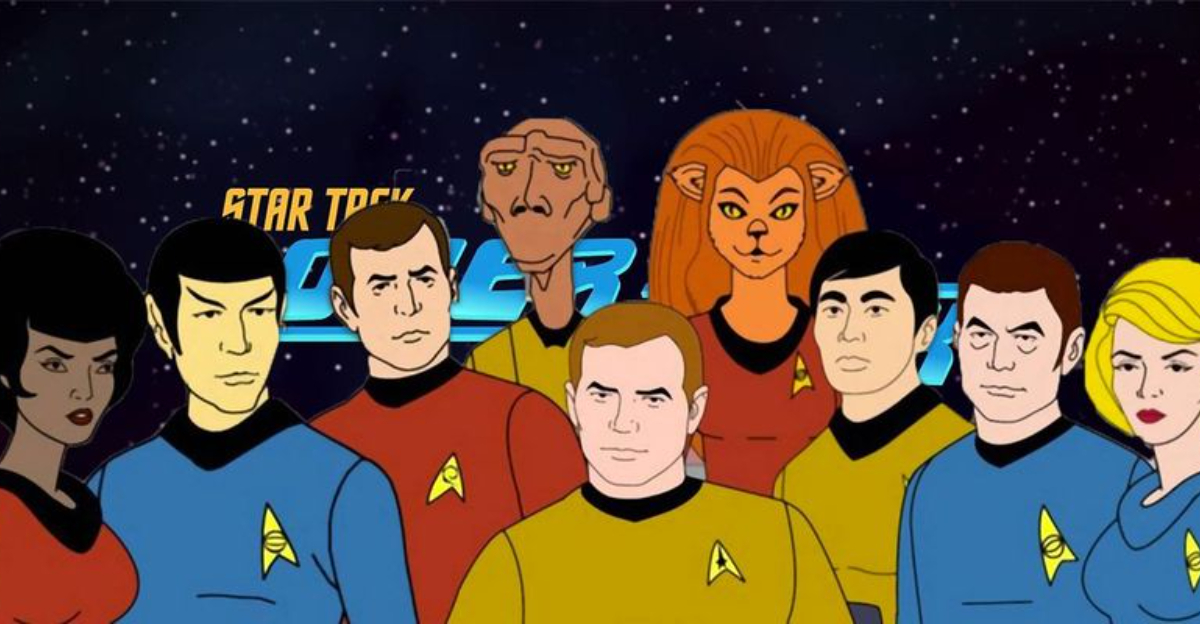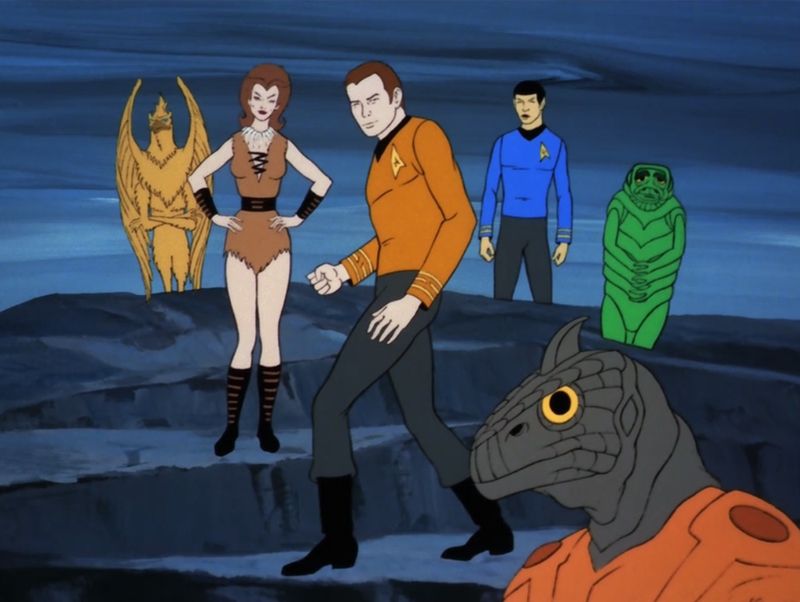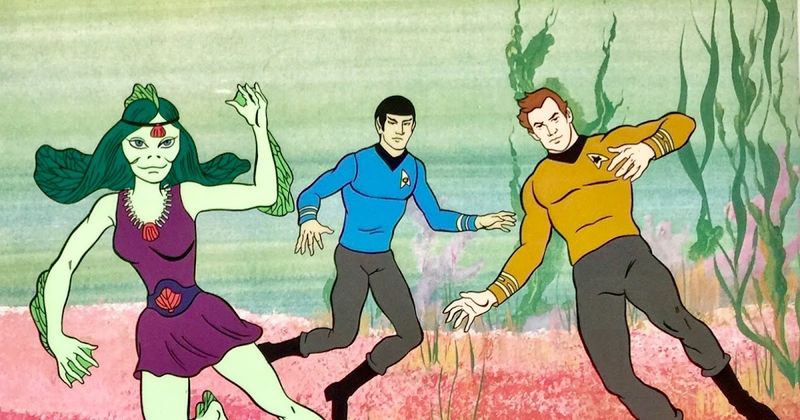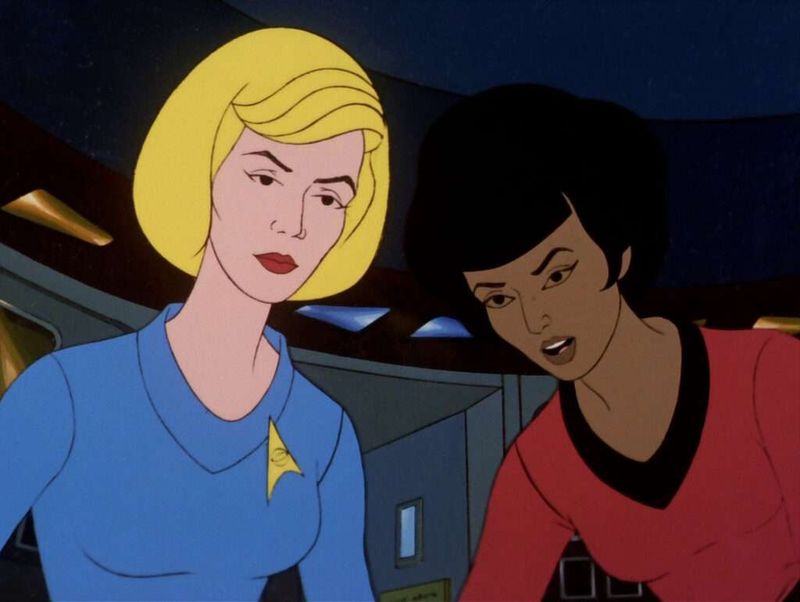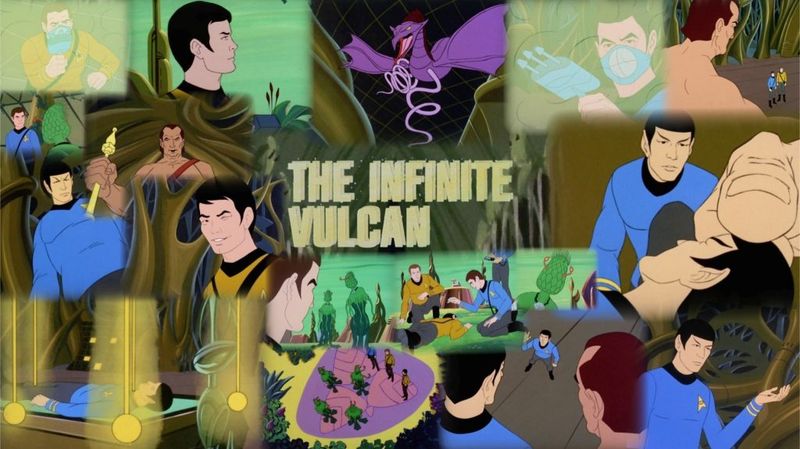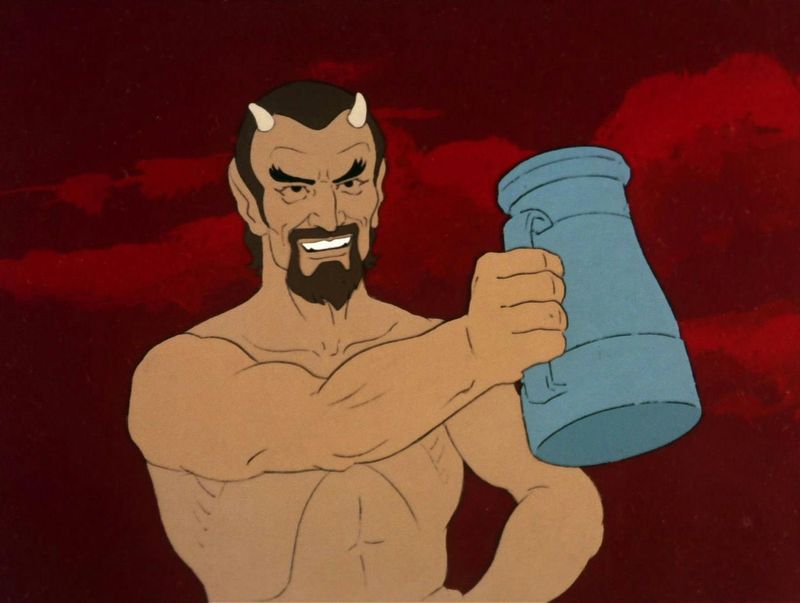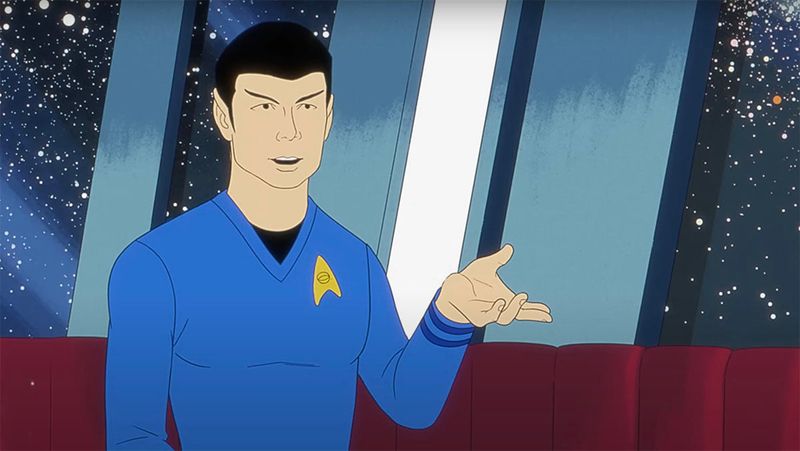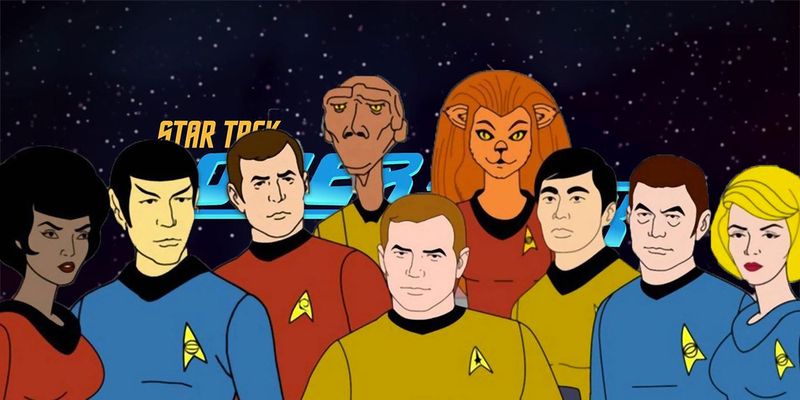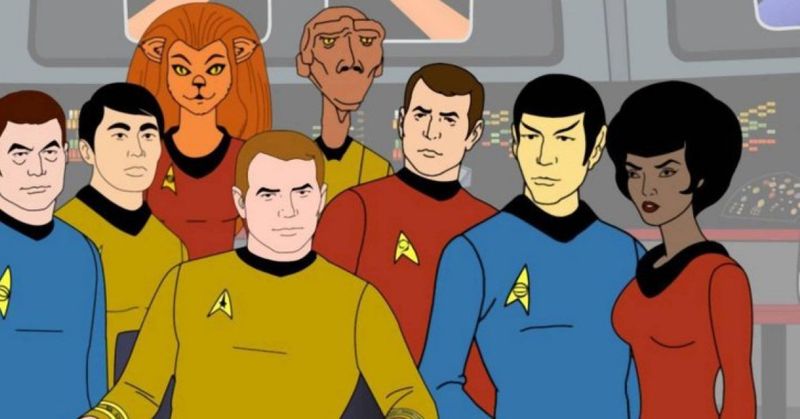Explore the fascinating world of Star Trek’s often overlooked animated series. This unique show introduced groundbreaking concepts, broke barriers, and kept the Star Trek universe alive in surprising ways.
Discover why this animated series deserves recognition alongside its live-action counterparts.
1. It’s Officially Canon (Unlike Some Live-Action Shows)
Gene Roddenberry, the visionary behind Star Trek, regarded the animated series as the true “fourth season” of the original show. Unlike some live-action adaptations, this animated series holds a special place in Star Trek lore as it was later declared canon by Paramount. This means that the imaginative ideas explored, such as delving into Spock’s childhood, are officially part of the Star Trek universe. The animation allowed for stories that transcended typical live-action constraints, enriching the canon with depth and creativity.
2. The Original Cast Returned (Including Nimoy & Shatner)
Despite being an animated series, this show featured the original cast members lending their distinctive voices to their beloved characters. Leonard Nimoy and William Shatner returned, ensuring authenticity and continuity for fans. The presence of the original voices made the series unique, as it was the only 1970s Star Trek production to feature the real Kirk, Spock, and McCoy. This reunion of the iconic trio added a layer of nostalgia, connecting the animated series to the live-action legacy.
3. It Introduced Game-Changing Trek Concepts
The animated series dared to introduce concepts that would shape Star Trek’s future. It featured the first-ever holodeck episode, a concept that would become a staple in later series like The Next Generation. The introduction of the Kzinti, fierce alien warriors, added a new dimension to the universe, later referenced in Star Trek: Picard. Additionally, Kirk’s middle name, Tiberius, was unveiled here, adding to the lore. These innovative ideas demonstrated the series’ capacity to expand and evolve the Star Trek narrative.
4. The Animation Let Them Go Where Live-Action Couldn’t
Freed from the limitations of live-action filming, the animated series explored realms beyond imagination. Giant aliens roamed the screen, psychedelic space battles dazzled viewers, and even a talking cat served as a First Officer. The animation opened doors to creative storytelling that live-action couldn’t achieve at the time. This visual daring allowed Star Trek to experiment with bold and unconventional ideas, broadening its appeal and pushing the boundaries of science fiction storytelling.
5. It Won Star Trek’s First Emmy
In 1975, the animated Star Trek series achieved a remarkable feat by winning an Emmy for Outstanding Entertainment Children’s Series. This accolade marked a historic moment for the franchise, as it was Star Trek’s first Emmy win. The series triumphed over popular competitors like Scooby-Doo and Super Friends. The recognition underscored the show’s ability to captivate audiences and deliver meaningful content, even within the realm of children’s programming. It set a precedent for the quality and impact of future Star Trek endeavors.
6. It Had Trek’s First Black Female Captain
Long before Discovery’s Michael Burnham, the animated series introduced groundbreaking characters like Lt. M’Ress, a cat-like alien, and Captain Laura Bethune. Captain Bethune, featured in a time-travel episode, became Star Trek’s first Black female captain. This milestone broke barriers in representation and diversity, paving the way for future characters who would continue to challenge norms. The series’ commitment to inclusivity was evident in its forward-thinking portrayal of diverse characters, both alien and human.
7. Writers Included Trek Legends (and Sci-Fi Greats)
The animated series benefited from the creative minds of Star Trek legends and renowned science fiction writers. D.C. Fontana, a key writer from the original series, contributed her expertise, ensuring continuity and depth in storytelling. Larry Niven, known for his Ringworld novels, also penned episodes, adding a sharper sci-fi edge. Their involvement elevated the series beyond typical children’s cartoons, offering stories that resonated with both young and adult audiences, and enriching the Star Trek universe.
8. It Was Trek’s First LGBTQ+ Allegory
The episode “The Infinite Vulcan” served as a pioneering allegory for LGBTQ+ themes. By exploring the concept of clones, the series subtly addressed issues of identity and acceptance. In an era when such topics were rarely discussed on television, especially in children’s programming, this animated episode tackled complex social themes with a stealthy approach. Gene Roddenberry’s forward-thinking vision allowed the show to explore ideas that would challenge societal norms and encourage viewers to think critically.
9. It’s Bizarrely Dark for a “Kids’ Show”
One of the most unusual episodes, “The Magicks of Megas-Tu,” takes the Enterprise crew on a journey to a dimension resembling Hell, where they encounter a being resembling Satan. This dark and bizarre storyline stands out in the animated series, challenging the notion of children’s programming. The episode’s exploration of morality and the supernatural offered a deeper layer of storytelling, defying expectations and providing thought-provoking content that transcended typical animated fare of the time.
10. It’s the Only Trek Where Spock Smiles—a Lot
In a departure from his typical stoic demeanor, Spock is seen smiling, laughing, and even playing a musical instrument known as the space harp in the animated series. The looser constraints of animation allowed for a more playful exploration of Spock’s character, revealing a different side of the beloved Vulcan. This portrayal added depth and humor to his character, offering fans a new perspective on Spock’s personality and enhancing his legacy within the Star Trek universe.
11. It Kept Trek Alive After NBC’s Cancellation
Following the cancellation of the original series by NBC, the animated series played a crucial role in keeping the Star Trek franchise alive. It cultivated a dedicated fanbase, maintaining interest and enthusiasm for the universe. This cult following was instrumental in paving the way for Star Trek: The Motion Picture in 1979. Without the animated series, the franchise might not have experienced the revival that led to its enduring success. Its impact on the continuity and survival of Star Trek is undeniable.
12. It’s Surprisingly Easy to Binge
With only 22 episodes, each ranging from 12 to 24 minutes, the animated series is the quickest Star Trek series to binge-watch. The compact format allows viewers to experience the entire series in a short span, making it accessible for both new fans and longtime Trekkies. Available for free on Paramount+, it offers an easy entry point into the Star Trek universe. Its brevity and availability make it an attractive option for those looking to explore Star Trek’s animated adventures without a significant time commitment.
13. Modern Trek Still References It
The influence of the animated series can be seen in modern Star Trek productions. Shows like Lower Decks and Strange New Worlds pay homage by referencing elements from the animated series, such as the Kzinti and Robert April. These nods highlight the lasting impact and relevance of the series within the broader Star Trek canon. By weaving in these references, contemporary series acknowledge the contributions of the animated series and its place in Star Trek history, ensuring its legacy endures.
14. It’s a Time Capsule of 1970s Sci-Fi Weirdness
The animated series serves as a nostalgic time capsule of 1970s sci-fi aesthetics. From its groovy alien designs to the trippy jazz soundtrack, it embodies the era’s unique style and creativity. These elements create a distinct atmosphere, transporting viewers back to the golden age of 1970s animation. This quirky charm appeals to fans of retro sci-fi and those who appreciate the imaginative designs and soundscapes of the time. The series is a testament to the era’s influence on science fiction storytelling.
15. It Proves Trek Works in Any Format
The animated series demonstrates that Star Trek’s core elements—philosophical dilemmas, iconic characters, and lore expansions—can thrive in any format, even a low-budget cartoon. Despite limited resources, the series delivered compelling stories and explored complex themes, proving that Star Trek’s essence transcends medium. This adaptability has allowed Star Trek to expand into various formats over the years, from films to modern animated series, affirming its status as a versatile and enduring franchise.
